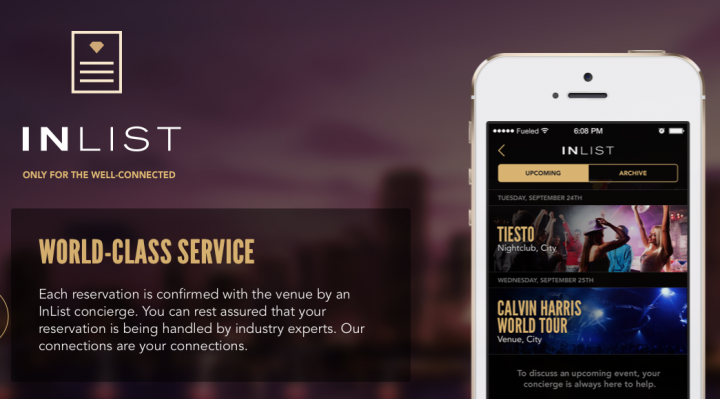Nearly every tech conference or tradeshow is flooded with businesses touting “the next big thing.” TechCrunch Disrupt is filled with the Airbnb of anything you can imagine. Everyone at E3 has the next “Call of Duty,” and InfoComm has more whiteboards than your local school district. So what separates you from the crowd?
This is the exact question my team has been working feverishly to answer while developing InList. Although we haven’t done a full PR launch yet, we’ve continued to build a strong foundation by learning from other app developers’ mistakes. If you’re looking to create the next great app, keep these factors in mind.
1. Build a Passionate Team
Anyone can have a great idea, but implementation matters when it comes to succeeding in business. Investors look at your team more than the idea, and you should, too. It’s important to build a trustworthy team that can handle the tasks you delegate. Otherwise, you’ll pull yourself in too many directions.
Scout the best and brightest talent you can afford, and foster an environment of open communication. Engrain your vision and values in them — that will become the foundation of your company. Everyone on your team needs to fully understand your branding, image, strategy, and mission so you can present a united front.
2. Know Your Customers
To build a successful brand, you need to know your customers as deeply and intimately as you know yourself. Billboards and print ads are effective methods for creating brand awareness, but don’t expect great conversion rates.
Listen to customer feedback, and implement only the features you determine are absolutely necessary. Build your product around their needs while remaining simple. Remember, if you don’t take your customers into account, your competition will.
3. Develop a Detailed PR Strategy
If you think submitting a press release to PRWeb will get your story picked up by every media outlet, you’re in for an unpleasant surprise. Just because you build it doesn’t mean they will come. A strong launch must be supported by a calculated and methodical PR plan. That’s how Facebook overtook Myspace to become the premier social media site.
Target publications that reach your customers, industry insiders, and potential investors. Develop relationships with these outlets. When hiring a PR firm, perform due diligence and confirm that the company has the track record and connections you need to reach your target market. Ensure that the information you release conveys your message clearly; after it’s picked up by a major publication, it secures a permanent place in Internet history.
4. File Patents and Trademarks
Many business leaders overlook the importance of filing for patents and trademarks, but the success of your launch may very well depend on them. You can easily lose brand recognition and positive traction by discovering someone else already owns the rights to your name or important sections of code.
Filing a trademark alone can take a year, which gives your competitors time to dispute your trademark and cause potential issues. Don’t procrastinate on this. It can result in a very costly mistake that crashes your app startup.
5. Test, Test, and Continue Testing
Beta testing is an important step. Your app may work well in the lab, but you have to know how it reacts in the “real” world before releasing it to the market. This is also where you learn the best market fit for your app. If you launch your app and don’t understand the user interface and user experience, you’ll face embarrassment and permanently lose potential customers.
Don’t restrict your testing to this phase. You should also refine your business processes, including payment processing, vendor payments, order fulfillment, email delivery issues, scalability, customer support, and app update release processes.
Testing isn’t just for pre-release; app development is a lifelong commitment. The processes and procedures you develop during the beta-testing phase will carry on throughout the life of your company and define your brand.
6. Form Strategic Partnerships
No matter what your app does, you’ll need contacts in place for services and fulfillment. Develop these early by seeking strong business relationships to address your startup’s areas of vulnerability and weakness. Also, understand that you can create success by proximity — as Vine did by generating early buzz about its acquisition by Twitter.
You may not get as lucky as Vine, but partnerships with experts in your field are forms of endorsement. Having well-known names associated with your brand will help you overcome many hurdles because you’ll build trust with consumers and investors while receiving valuable feedback from experienced veterans.
Designing an app isn’t easy, and building a product doesn’t entitle you to a customer base. Overnight success is something that only happens on the ten thousandth night you’ve slaved away on your app. If you have a strong team, a solid product, and time and resources dedicated to laying a solid business foundation, your app will shine in a market flooded with inferior products.
Gideon Kimbrell is a software engineer and entrepreneur. He is co-founder/CEO of InList.com, the premier app for booking reservations at the most exclusive nightlife, charity, and entertainment events in major locations around the world. He can be reached on LinkedIn and Twitter.
————————————–
Photo Credit: Michael Coghlan









